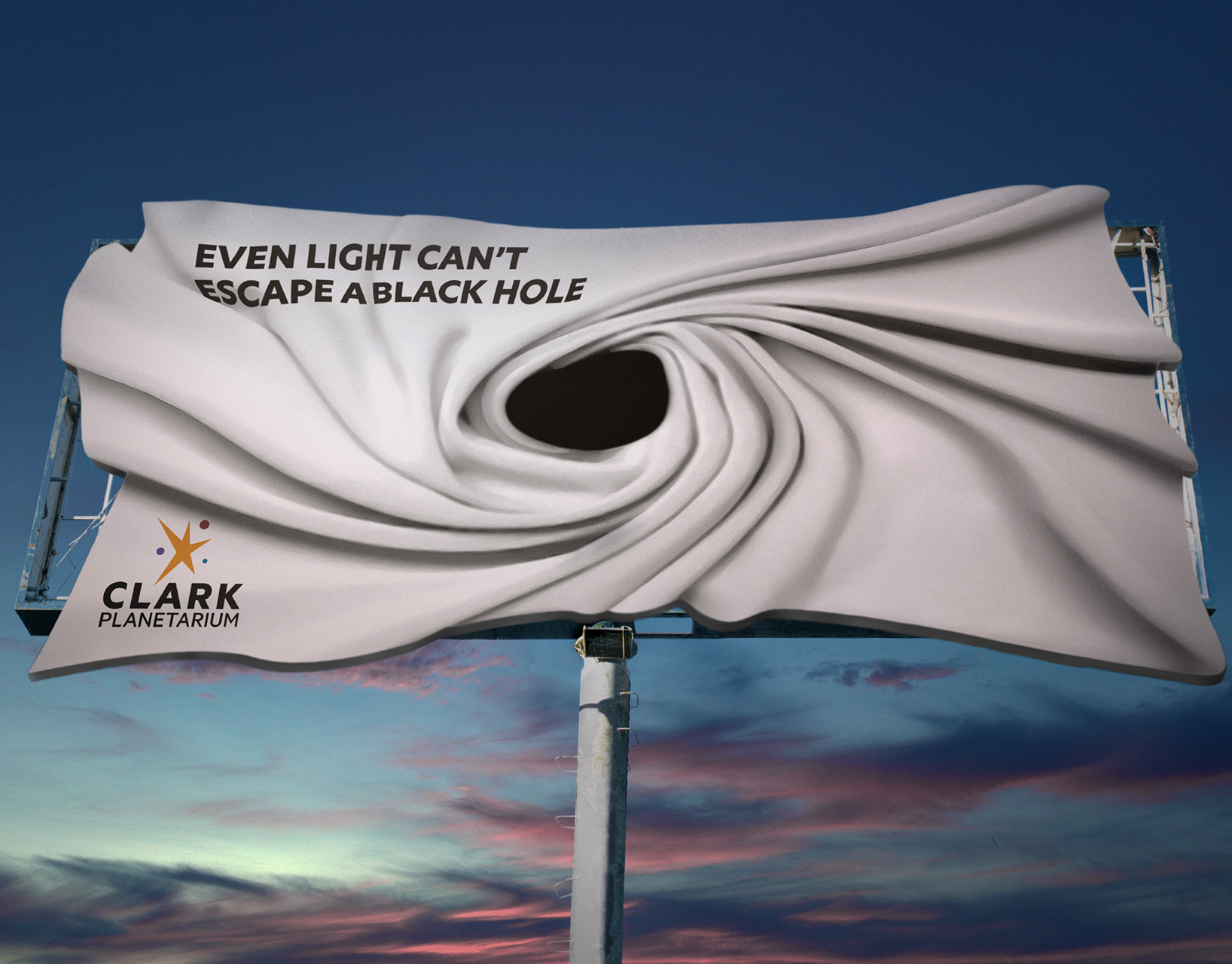BACKGROUND
Kristian Bjørnard is a graphic design educator at the Maryland Institute College of Art (MICA) in Baltimore, focusing on sustainable design and activism. During my internship under him in 2021 I had to the honor of collaborating with Kristian in the development and creation of these two 17" x 11" dyptych posters, designed to highlight the pressing need for communal land tenure to be returned to indigenous peoples. In almost every country in the world, indigenous groups rely on the preservation of their surrounding environment to live, but ongoing economic and governmental forces continue to diminish indigenous territory and resources. By insuring the future sovereignty of indigenous lands, we can prevent land-based carbon emissions and secure a livable planet for everyone.
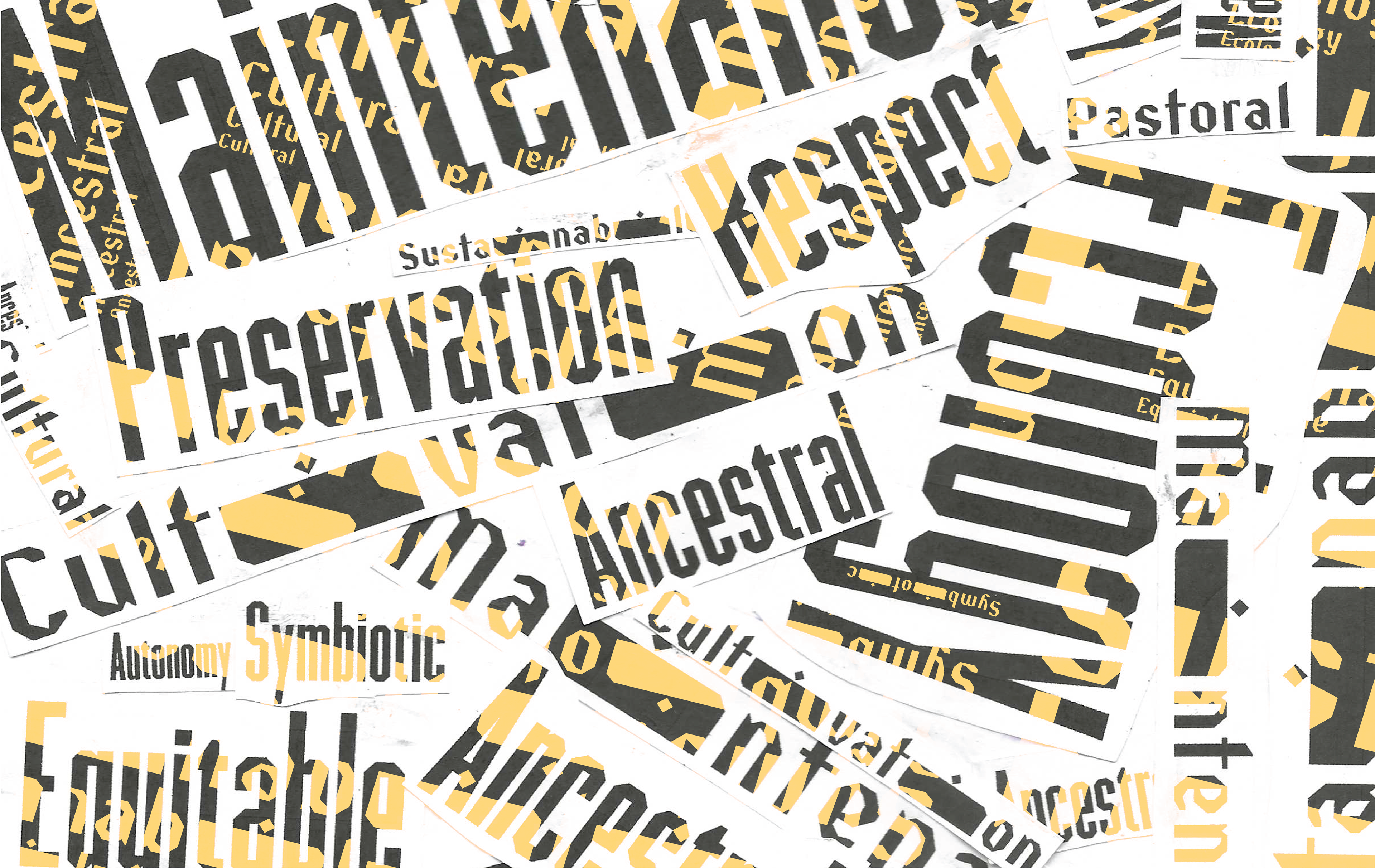

PROCESS & TECHNIQUE
Kristian began this project by having us dive into research, allowing us to choose from an extensive list of subjects and collect various assets for us to use in developing our diptychs. Once everything was successfully gathered, we would give a brief presentation on our findings before using those same gathered resources to print, cut, and paste twenty analog compositions. Using these compositions, we would return to the drawing board one last time to arrange our final designs.
TYPEFACES: Commune, Resistance
COLOR SCHEME:






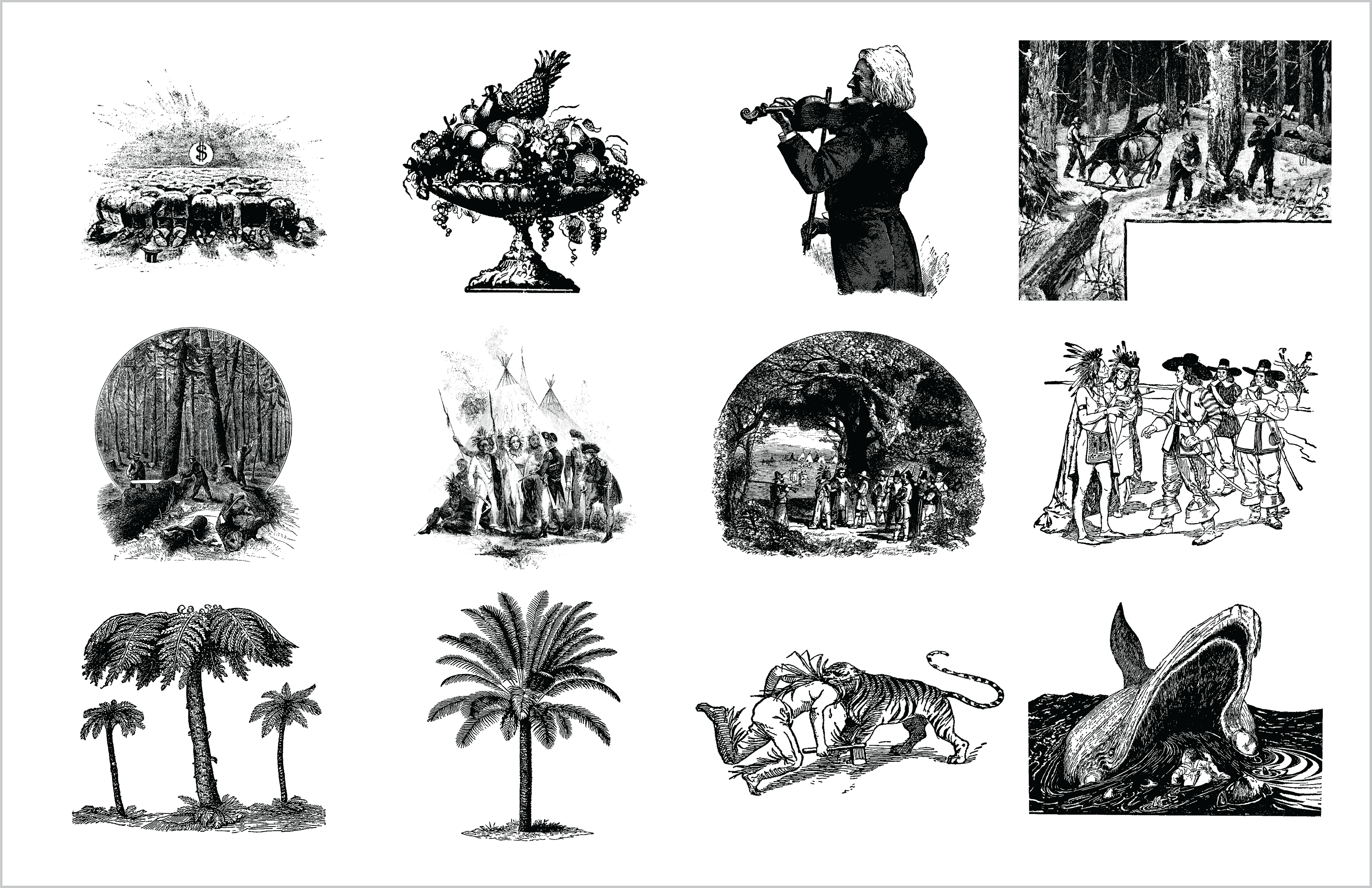

GATHERED ASSETS
As part of the initial research phase, we were tasked with gathering fifteen "buzzwords", three quotes, twelve open-source visual elements, and five literary sources regarding our chosen topic. Although I think the other items mostly speak for themselves regarding indigenous people's land management, I ended up choosing only vintage linocuts for the visual elements because I felt that it properly reflected the transition into the industrial era and the European colonization of so much of the world during that time.


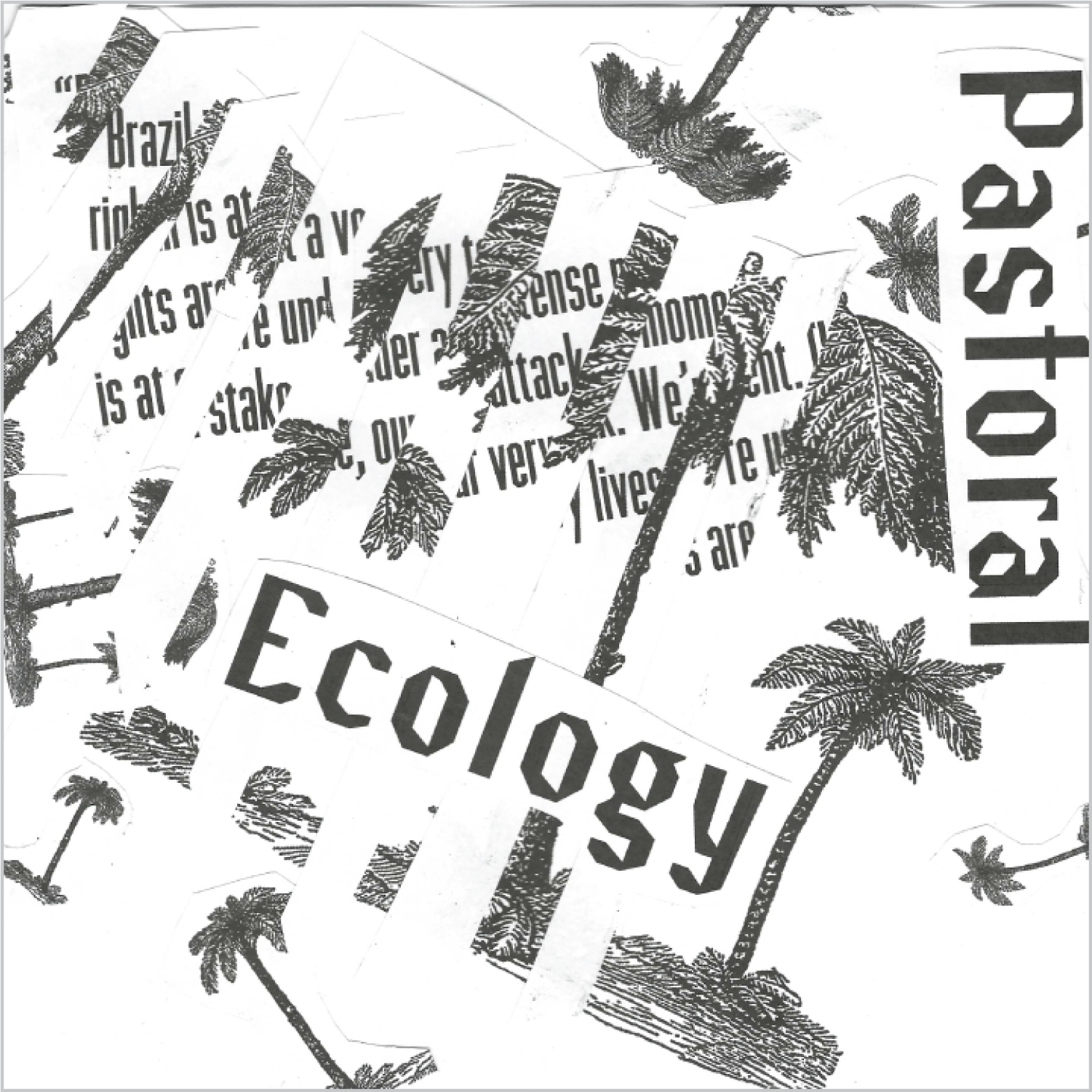




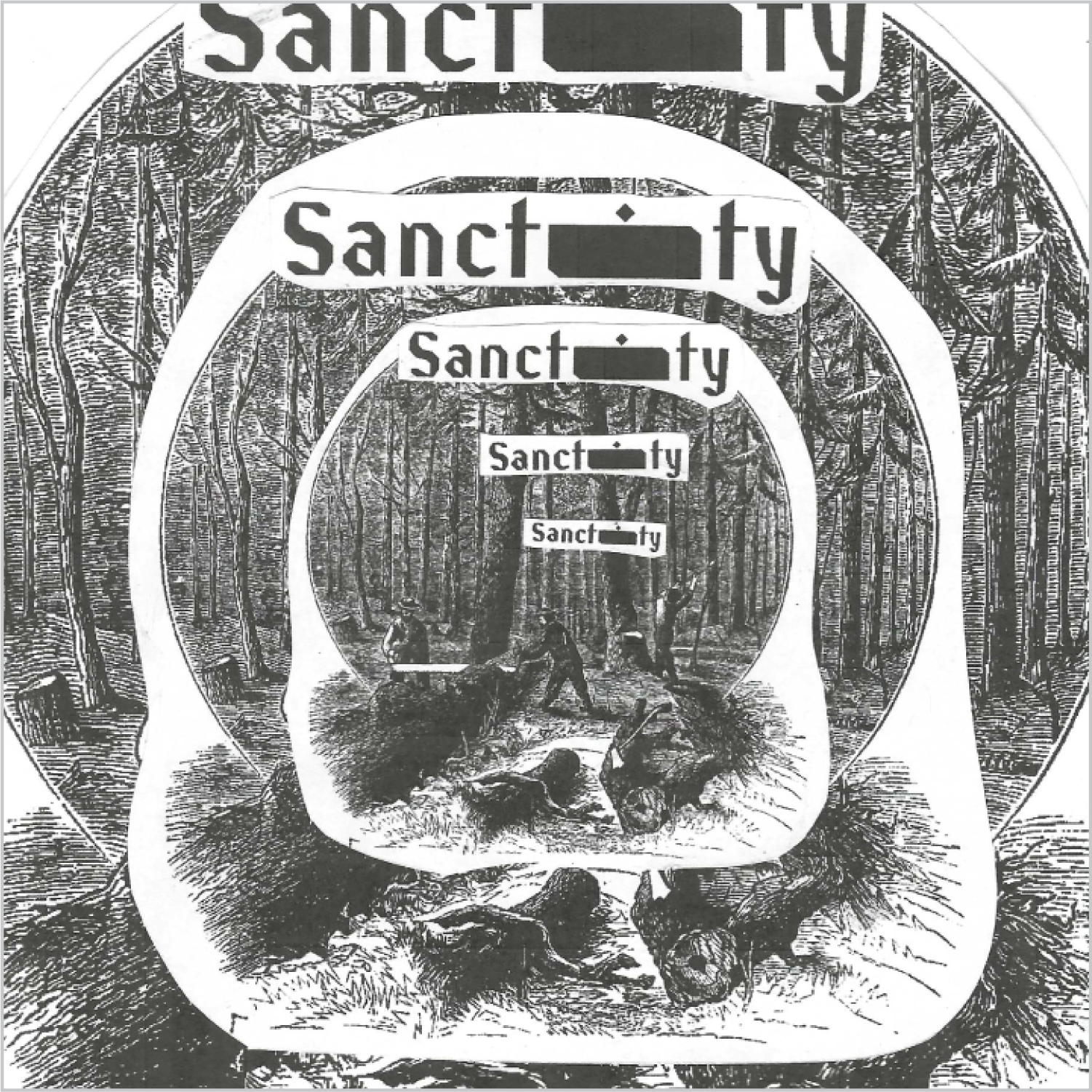




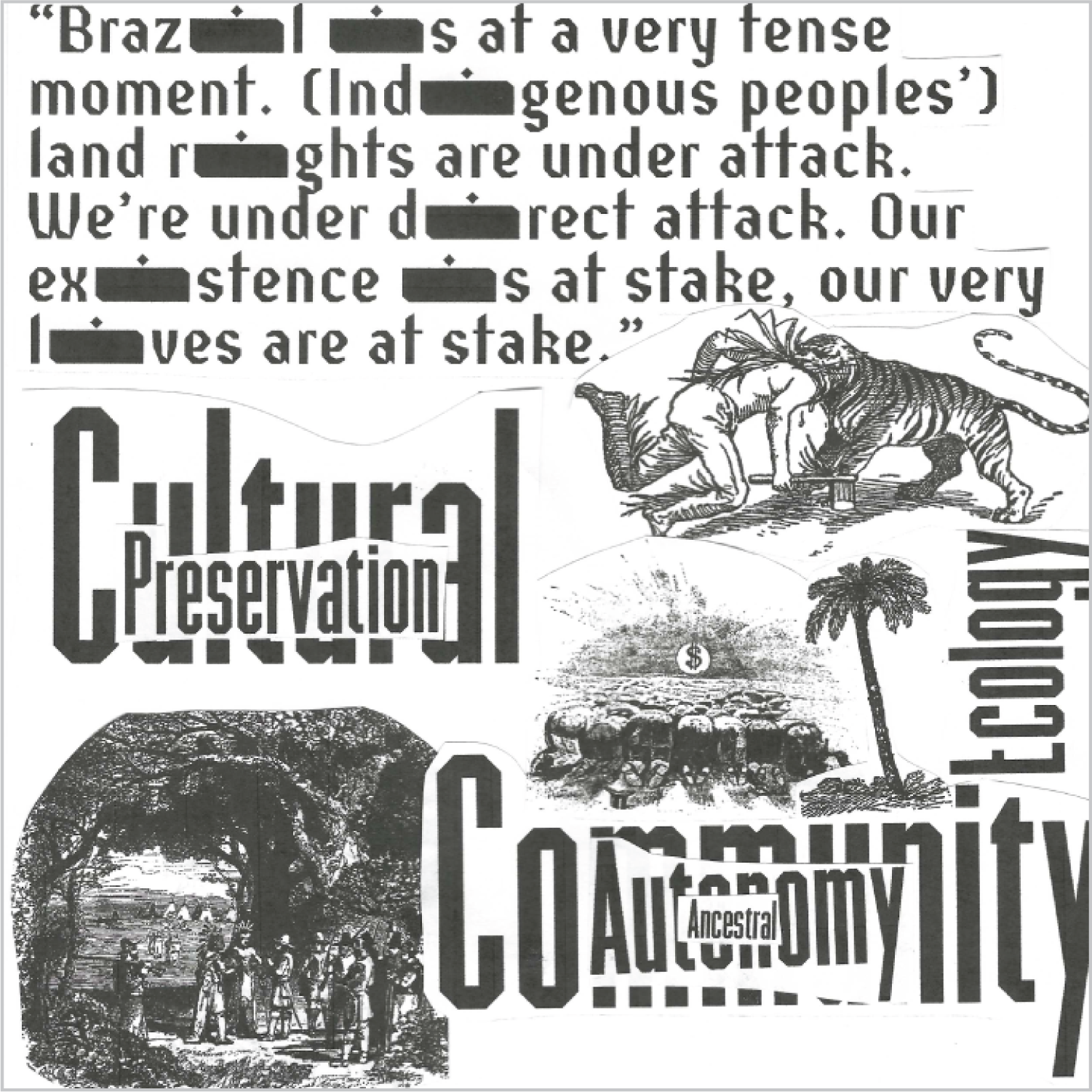
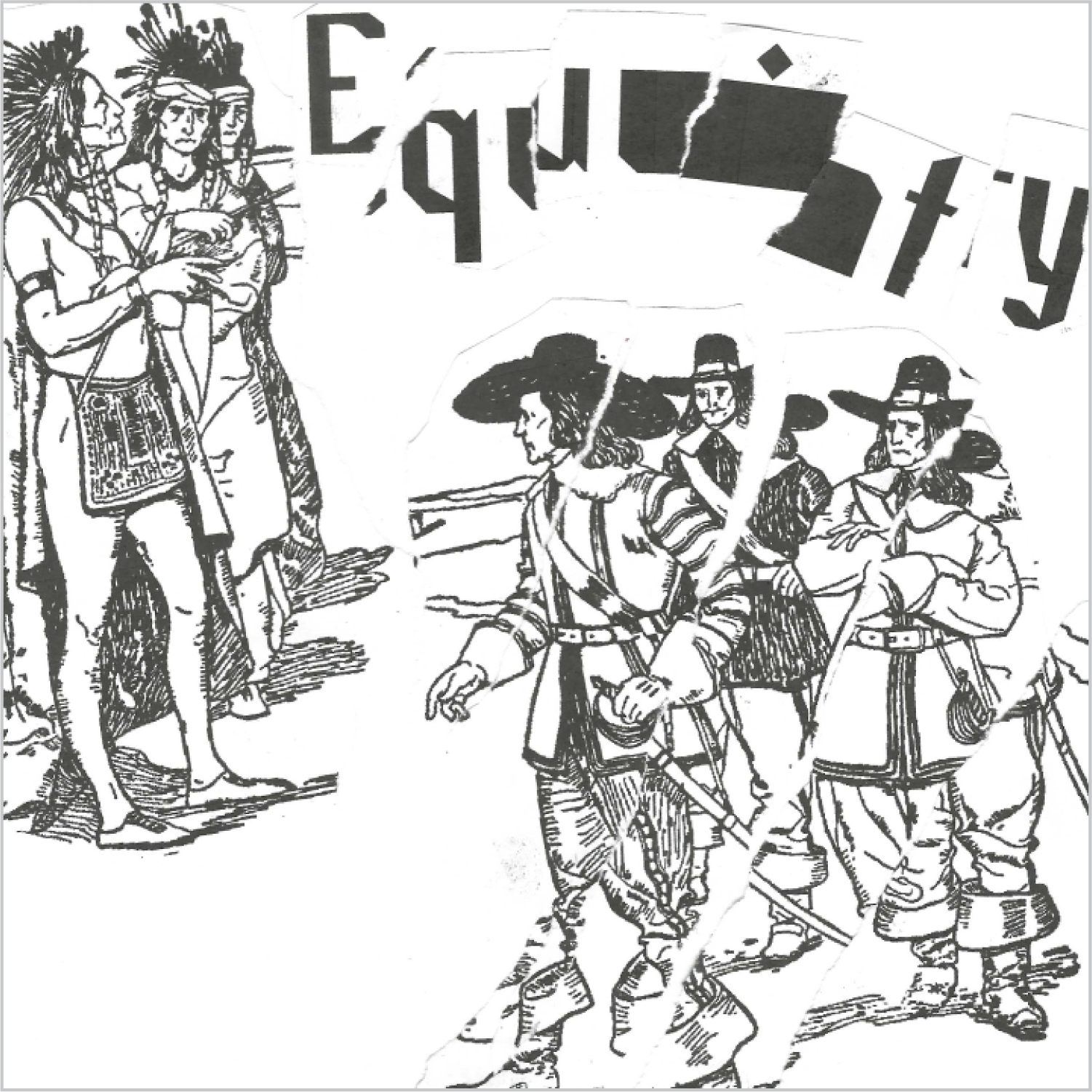
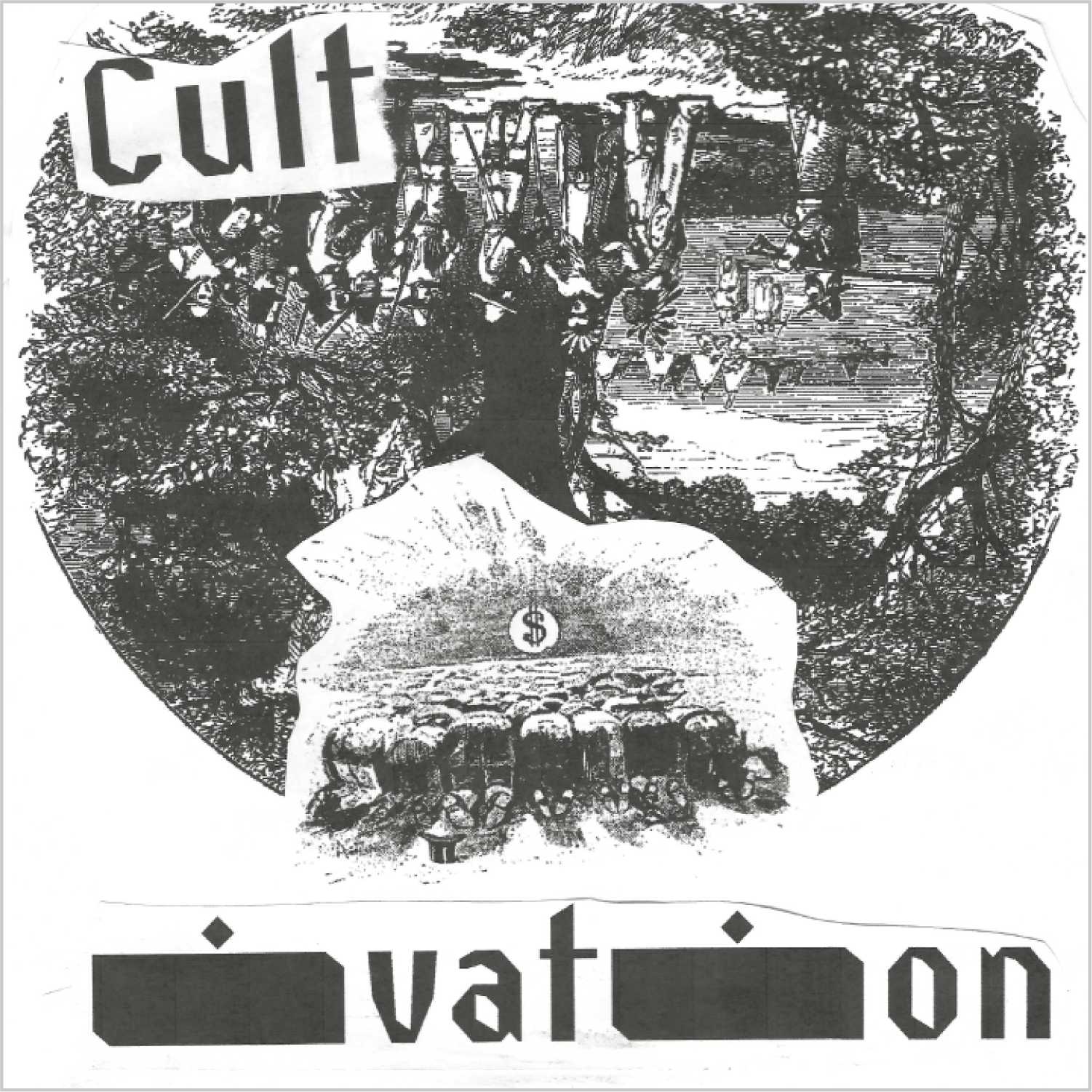



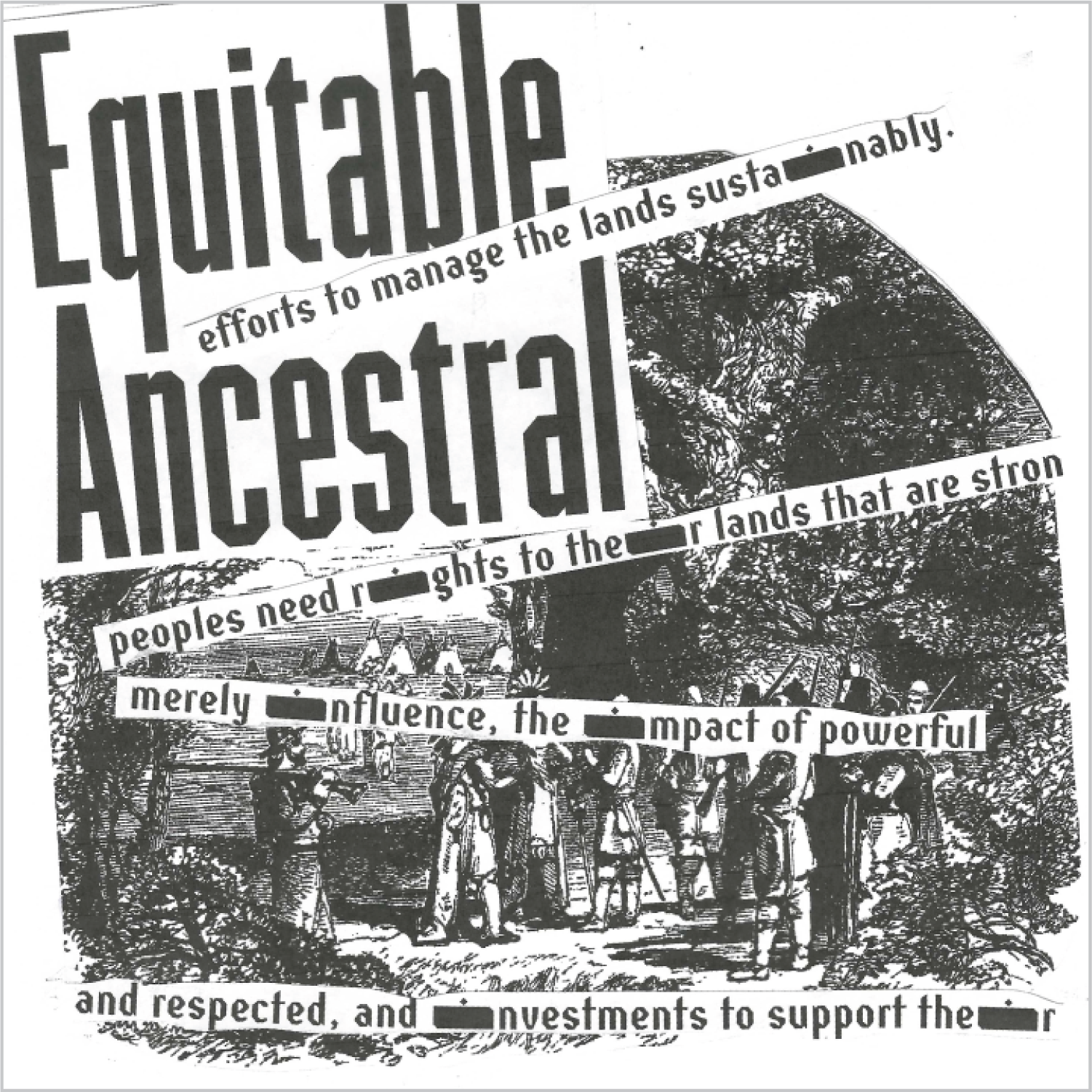

ANALOG EXPIRAMENTS
Once I'd gathered my assets, I began developing the analog experiments. Kristian challenged us to not think too hard during this phase and simply allow ourselves to create, so while the intended themes are still certainly alluded to in this set, most of these mockups turned out to be more expressionistic in nature with only a suggestion of the intended issue. From these images I was then able to develop the final compositions shown above.







